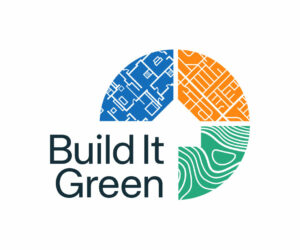Hosted by:

Ray Boyle
Ray has spent the last 15 years exploring how to build regenerative and inclusive cities. She’s currently a Board Member for Build it Green, and pursuing a Masters of City and Regional Planning at UC Berkeley.
Every new construction project is an opportunity to incorporate the best building methods and materials possible, creating buildings that are better for human and environmental health and more resilient. In this session we look at practices to measure environmental and health impacts, minimize harm, and beyond—toward revitalizing the places materials are sourced from and where they land, especially in ADUs.
We want to create healthy, environmentally-friendly homes of all sizes and meet an acute housing need, while also creating thriving communities and a thriving planet. Is it possible? Here we welcome three different perspectives on natural, low-carbon materials and their applications, to offer ideas of what’s possible.
Learn more about this series here.

Ray has spent the last 15 years exploring how to build regenerative and inclusive cities. She’s currently a Board Member for Build it Green, and pursuing a Masters of City and Regional Planning at UC Berkeley.
As Co-Director of CASBA, Massey works with cities, counties and the state to make building with straw bales an accepted form of construction throughout California.
“How do you capture co-benefits in a lifecycle analysis form? How do you capture regenerative supply chains and reorient this technical document to that reality?”
– Massey Burke
David is both a structural engineer and owner of Mar Structural Design, an award-winning, mission-driven, firm on the forefront of performance-based seismic design and sustainable design.
“I appreciate all the consideration that goes into material choices. There’s an environmental karma [Cash] is describing for us. I think people with more choice will make better choices if we understand what the impacts are.”
– David Mar
Cash works at Higg Co. to deliver a common language for sustainability to empower businesses to protect the well-being of factory workers, local communities, and the environment.
“Understanding the function and the context of materials is such a critical piece. For example, how does using more durable materials that add lifetime to the product affect the overall carbon or water footprint? How does the durability affect the end of life or the recyclability of (the product)?”
– Cash East



Alex Coba
Communication Associate
As a proud California native from Stockton, Alex brings a wealth of experience and a versatile skill set. He has a solid communication background with a Bachelor of Arts in Journalism and Public Relations from California State University, Chico. Alex is adept at strategic communications and media relations, with experience gathering and sharing stories from his local communities that uplift the unique spirit and values of those places. He is excited to join Build It Green, where he can apply his talents to further BIG’s mission to help communities across California thrive